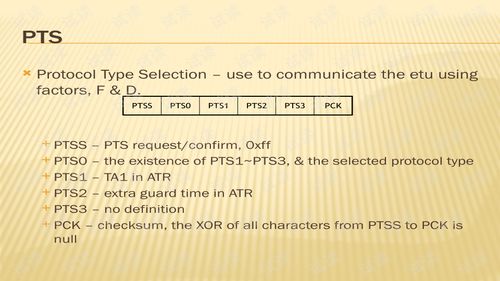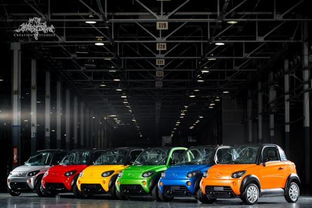Introduction:
e article introduces the concept of "self-service" in the context of modern technology and its application in various industries. Self-service refers to the ability of individuals or organizations to perform tasks without direct human intervention, utilizing automated systems or tools. This concept has become increasingly important due to advancements in technology, particularly in areas such as healthcare, finance, and retail. The article discusses the benefits of self-service, including increased efficiency, reduced costs, and improved customer satisfaction. It also highlights the challenges associated with implementing self-service systems, such as technical issues and resistance from employees. Finally, the article provides examples of successful self-service implementations in various industries, emphasizing the potential for further innovation and growth
tle: Understanding the Linguistic Significance of Car Brands' English Logo Designs In the world of automotive, brand recognition is paramount. The logo of a car brand is not merely a visual representation; it carries significant linguistic meaning that can influence perception and market positioning. This article will explore the various ways in which car brands use their English logos to convey their brand identity, values, and image. We'll also provide an overview of some of the most recognizable car brands and their logos, along with examples of how they have been used over time.

Brand Recognition through Linguistics: Car brands often employ a combination of typography, color, and imagery to create a memorable logo. However, the language used within these designs can be just as important. For example, the word "Mercedes" is written in capital letters, reflecting the German-origin company's status as a leading luxury brand. Similarly, the name "Tesla" is written in lowercase letters, suggesting a more modern, innovative approach to electric vehicles.
The Language of Automotive Brands: When designing their logos, car companies often choose words that align with their brand image and values. For instance, Audi uses the word "Ausgezeichnet," which means "excellently made," to describe its products, reflecting its commitment to quality and craftsmanship. In contrast, Ford uses the phrase "Fordism" to emphasize its emphasis on efficiency and reliability.
Linguistic Symbolism: Many car brands use specific language symbols to convey their unique identities. For example, Porsche's logo features a black and white Porsche 356, symbolizing speed and elegance. Toyota, on the other hand, uses a blue and yellow striped pattern to represent the colors of its iconic Corolla model.
Case Studies:
-
Mercedes-Benz: The German brand's logo incorporates the word "Mercedes" in capital letters, reflecting its status as a luxury carmaker. Over time, the logo has evolved to include elements like a stylized letter M, representing the German origins of the company.
-
Volkswagen: The German automaker's logo features the word "Volkswagen" in uppercase letters, signifying its role as a leader in the industry. The logo also includes a stylized VW logo, which has been around since 1937.
-
Toyota: The Japanese brand's logo features a blue and yellow striped pattern, representing the colors of its iconic Corolla model. The logo has remained relatively unchanged since its introduction in 1966.
-
Tesla: The American electric vehicle manufacturer's logo uses lowercase letters to reflect its focus on innovation and sustainability. The logo also features a lightning bolt symbol, representing the brand's commitment to fast charging technology.
Conclusion: The language used in car brands' logos is not just a matter of aesthetics; it's a reflection of the company's values and mission. By understanding the linguistic significance of their logos, consumers can better connect with the brand's identity and make informed purchasing decisions. As we continue to see new car models emerge and old ones fade into obscurity, the importance of branding remains
扩展阅读:

大家好,今天我们来聊聊一个非常有趣的话题——汽车品牌的英文标志,这些标志不仅仅是简单的符号,它们背后蕴含着丰富的历史、设计智慧,以及巨大的影响力,让我们一起来看看这些标志背后的故事吧。
汽车品牌英文标志的发展历程
汽车品牌英文标志的发展历程可谓源远流长,自汽车诞生以来,各大品牌就开始设计自己的标志,以展示其独特性和专业性,早期的汽车标志大多以简洁明了为主,如奔驰的“Benz”、福特的“Ford”等,这些标志至今仍为人们所熟知,随着时间的推移,汽车标志逐渐融入了更多的设计元素,从字体到颜色,再到图案,都变得更加丰富多样。
汽车品牌英文标志的设计要素
- 简洁性:汽车品牌的英文标志通常要求简洁易懂,便于识别,特斯拉的“Tesla”标志,采用简洁的字母设计,给人留下深刻的印象。
- 独特性:品牌标志需要具有独特性,以便与其他品牌区分开来,奥迪的四个圆环标志代表着其四个合并的公司,这一设计独特且具有辨识度。
- 色彩运用:色彩在汽车品牌标志设计中起着关键作用,宝马的标志采用蓝色和白色,象征着公司的技术精神和创新精神。
汽车品牌英文标志的影响力
汽车品牌英文标志的影响力不容小觑,它们不仅是品牌的象征,还影响着消费者的购车决策,一个优秀的品牌标志能够激发消费者的认同感,提高品牌的知名度和美誉度,奔驰的标志被视为高质量、高性能的象征,吸引了无数消费者购买奔驰汽车。
一些知名汽车品牌的英文标志案例
- 宝马(BMW):宝马的标志采用蓝白相间的色彩搭配,象征着公司的创新精神和技术实力,该标志在全球范围内广为人知,被誉为经典之一。
- 特斯拉(Tesla):特斯拉的标志采用简洁的字母设计,体现了公司的创新理念和环保精神,这一标志在全球范围内迅速传播,成为电动汽车市场的代表之一。
- 丰田(Toyota):丰田的标志采用简单的字母和椭圆形设计,象征着公司的品质和可靠性,这一标志在全球范围内广为人知,成为丰田汽车赢得消费者信任的重要因素之一。
汽车品牌英文标志的表格说明(以下是一个简单的表格)
| 品牌名称 | 英文标志 | 设计特点 | 影响力 |
|---|---|---|---|
| 宝马 | BMW | 蓝白色彩搭配,简洁明了 | 高知名度,象征创新与技术 |
| 特斯拉 | Tesla | 简洁字母设计 | 代表电动汽车市场,创新理念 |
| 丰田 | Toyota | 字母与椭圆形设计 | 体现品质与可靠性,全球知名度高 |
汽车品牌英文标志是品牌形象的重要组成部分,它们不仅是品牌的象征,还承载着品牌的历史、文化和价值观,在设计过程中,品牌需要考虑简洁性、独特性和色彩运用等因素,品牌标志的影响力也不容小觑,它们能够影响消费者的购车决策,提高品牌的知名度和美誉度,希望通过今天的分享,大家对汽车品牌英文标志有了更深入的了解。




